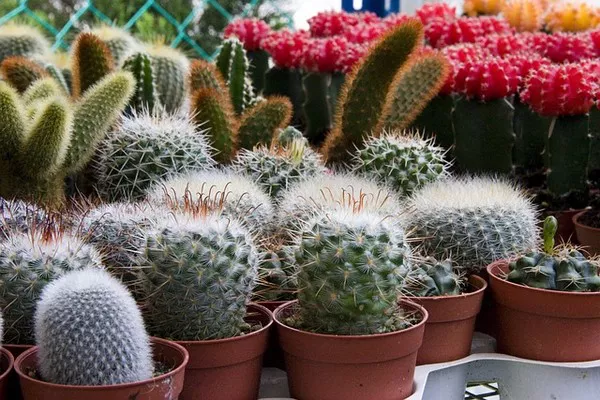Cacti, renowned for their striking and resilient appearance, often bloom with enchanting flowers that captivate admirers worldwide. These desert wonders have adapted to harsh conditions, and their flowers play a crucial role in their reproductive process. In this article, we delve into the intriguing world of cactus flowers, exploring their unique characteristics, adaptations, and the fascinating mechanisms they employ to attract pollinators. From vibrant colors to ethereal fragrances, cactus flowers showcase nature’s ingenuity in the most arid landscapes.
The Distinctive Nature of Cactus Flowers
Unlike most traditional flowers, cactus flowers are often characterized by their sheer uniqueness. They exhibit a wide range of shapes, sizes, and colors that add to the allure of these desert dwellers. From the strikingly bright blossoms of the Epiphyllum (orchid cacti) to the small, delicate flowers of the Mammillaria, each species presents an individualistic floral display.
Blooming Strategies and Adaptations
Cactus flowers have evolved diverse blooming strategies and adaptations that enable them to thrive in their hostile environments. One of the most remarkable features is their ability to bloom mostly at night when the temperature is cooler and humidity is higher, reducing water loss through evaporation. This nocturnal flowering is particularly common in desert regions.
Furthermore, some cactus species exhibit a phenomenon called “night-blooming syndrome,” where the flowers open and close only for a single night. This limited blooming period optimizes pollination chances while conserving valuable resources.
Role of Cactus Flowers in Reproduction
The primary purpose of cactus flowers is to facilitate sexual reproduction. The flowers contain male and female reproductive organs, allowing for pollination and subsequent seed production. When pollinators, such as bees, bats, moths, or birds, visit the flowers seeking nectar or pollen, they inadvertently brush against the reproductive structures, promoting cross-pollination between different cacti individuals.
Adaptations for Pollinator Attraction
To encourage pollinators to visit their blossoms, cactus flowers employ a variety of ingenious adaptations. Many species produce vibrant colors, such as reds, pinks, oranges, and yellows, which stand out against the muted desert landscape, effectively attracting pollinators from afar.
In addition to their visual appeal, some cacti emit enticing fragrances during the night to attract nocturnal pollinators like moths and bats. These fragrances are often sweet, fruity, or musky, luring potential pollinators from great distances in search of nectar and pollen.
Unique Floral Anatomy
Cactus flowers possess fascinating floral anatomy that contributes to their survival in arid climates. Their petals are often thick and fleshy, reducing water loss through evaporation. Moreover, their waxy surfaces prevent water condensation, ensuring that precious moisture is not lost during cool desert nights.
The floral structure also varies significantly among cactus species. Some flowers have long, tubular shapes, ideal for accommodating the tongues of hummingbirds or long-beaked insects. Others have open, shallow blossoms to accommodate short-tongued insects and bees.
Notable Cactus Flower Varieties
1. Rebutia (Aylostera)
The Rebutia genus showcases some of the most vibrant and captivating cactus flowers. Known for their striking colors, including fiery reds, oranges, and pinks, these diminutive plants create a stunning floral spectacle that is hard to miss.
2. Selenicereus (Queen of the Night)
The Selenicereus, famously known as the Queen of the Night, produces breathtakingly large and fragrant flowers that open exclusively at night. Its nocturnal pollination strategy is geared towards attracting nocturnal pollinators like bats and moths.
3. Echinopsis (Easter Lily Cactus)
The Echinopsis genus boasts large, trumpet-shaped flowers that bloom spectacularly, often in a matter of hours. These cacti are a popular choice among gardeners due to their remarkable blooming performance and diverse color palette.
Challenges and Conservation
Cactus flowers, like their plant hosts, face various challenges, including habitat loss, climate change, and illegal trade. As some species are endemic to specific regions, the destruction of their habitats could lead to irreversible loss. Conservation efforts aimed at preserving cactus populations and their unique flowers are essential to ensure their survival for future generations.
Conclusion
The world of cactus flowers is a mesmerizing and intricate realm, where nature’s creativity is displayed in vibrant colors, fascinating shapes, and remarkable adaptations. From their unique reproductive strategies to their specialized floral anatomy, cactus flowers embody the resilience and beauty of the desert landscape. As we continue to explore and appreciate these captivating desert wonders, let us also strive to protect and conserve their habitats, ensuring that their enchanting blooms continue to grace the arid landscapes for generations to come.


